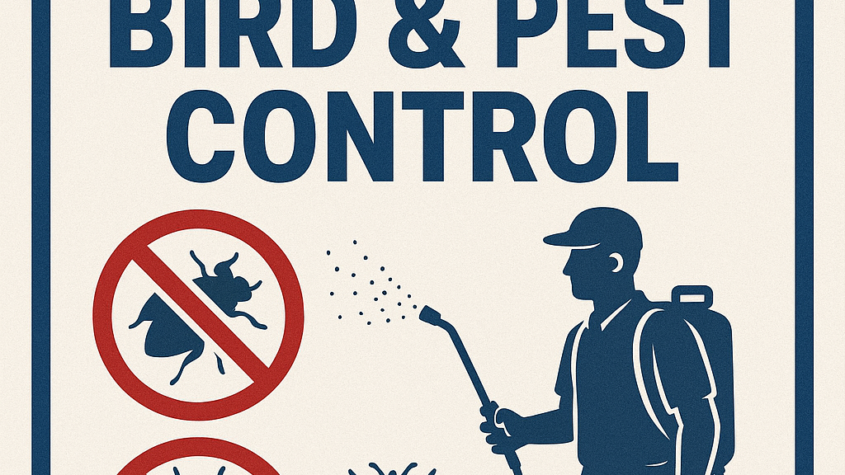
Rodent infestations can pose significant challenges for homeowners and businesses in Langley. They not only damage property but also pose health risks through the spread of diseases. Effective rodent control Langley involves understanding their behavior and implementing strategies that ensure long-term prevention.
Residents often overlook early signs of a rodent problem, such as droppings or gnaw marks. Recognizing these indicators is crucial for taking timely action. By addressing the issue swiftly, they can prevent larger infestations and reduce potential damage.
Professional pest control services in Langley offer tailored solutions, utilizing the latest techniques and products to eliminate rodents effectively. These experts can provide valuable insights into preventive measures that create an unwelcoming environment for rodents.
Understanding Rodents in Langley
Rodents pose significant challenges in Langley, affecting homes and businesses. Identifying common species, recognizing signs of infestation, and understanding associated health risks is crucial for effective control.
Common Species in the Region
Langley is home to several rodent species. The most prevalent include:
- Norway Rat: These rats are larger, with a thick body and blunt snout. They tend to live in burrows, often near water sources.
- Roof Rat: Smaller and agile, roof rats prefer climbing and nesting in trees or attics, making them harder to detect.
- House Mouse: Small and grayish-brown, house mice often invade buildings for food and warmth.
Recognizing these species helps determine appropriate control methods. Understanding their behaviors is equally important, as it enables targeted approaches.
Signs of Rodent Infestation
Identifying rodent infestations early can prevent major issues. Common indicators include:
- Droppings: Found near food sources or nesting areas, droppings are a clear sign of rodent presence.
- Gnaw Marks: Rodents constantly gnaw to keep their teeth trimmed. Marks on furniture, wires, or food packaging are telltale signs.
- Noises: Scratching or scurrying sounds, particularly at night, indicate rodents are active in the area.
Being vigilant for these signs allows for timely interventions, minimizing potential damage.
Health Risks and Damages
Rodents are vectors for numerous diseases, posing health risks to humans. Notable concerns include:
- Leptospirosis: Can be transmitted through rodent urine, potentially leading to severe health issues.
- Salmonella: Contaminated food or surfaces can lead to infections.
- Hantavirus: Spread through rodent droppings, it can cause serious respiratory problems in humans.
In addition to health hazards, rodent infestations can cause property damage. They chew through electrical wires, insulation, and structural components, leading to costly repairs. Early detection and control measures are vital for reducing these risks.
Effective Rodent Control Strategies
Rodent control involves various methods designed to prevent and eliminate rodent infestations. A combination of preventive measures, physical barriers, and professional services can ensure effective management of rodent problems.
Preventive Measures
Preventive measures are essential for reducing the likelihood of rodent infestations. Keeping a clean environment is crucial. This includes regularly disposing of trash and storing food in sealed containers.
Additionally, sealing any gaps or holes in the exterior of the home can deter rodents. Small openings, as small as a quarter, can allow entry. Maintaining landscaping can also help, ensuring that bushes and tree branches are trimmed away from the house.
Rodent Proofing Your Home
Rodent proofing involves making structural changes to prevent rodents from entering a home. Homeowners should inspect windows, doors, and vents for gaps and use caulk or steel wool to close them.
Installing door sweeps can block entry under doors. It is important to check for any cracks in the foundation and seal them. A thorough inspection of attics and basements is also recommended, as these areas often provide easy access for rodents.
Baiting and Trapping Techniques
Baiting and trapping are effective strategies for controlling existing rodent populations. Snap traps are one of the most common methods and should be placed in areas where rodent activity is observed.
Using bait such as peanut butter or nuts can attract rodents to the traps. Another option is glue boards, which capture rodents without the need for toxins. It is essential to check traps regularly and dispose of any caught rodents promptly to avoid odors and health risks.
Professional Pest Control Services
When infestations are severe, professional pest control services can provide expertise and resources for effective rodent management. Exterminators conduct thorough inspections to identify infestations and entry points.
They often employ advanced techniques and products that may not be available for public use. Many professionals also offer ongoing maintenance plans to help prevent future infestations, ensuring peace of mind for homeowners. Engaging with licensed pest control professionals can result in a more comprehensive solution tailored to specific needs.
Sympathy Flowers: Meaningful Gestures for Comfort and Support
Sympathy flowers serve as a heartfelt gesture during times of loss and grief. They provide…








